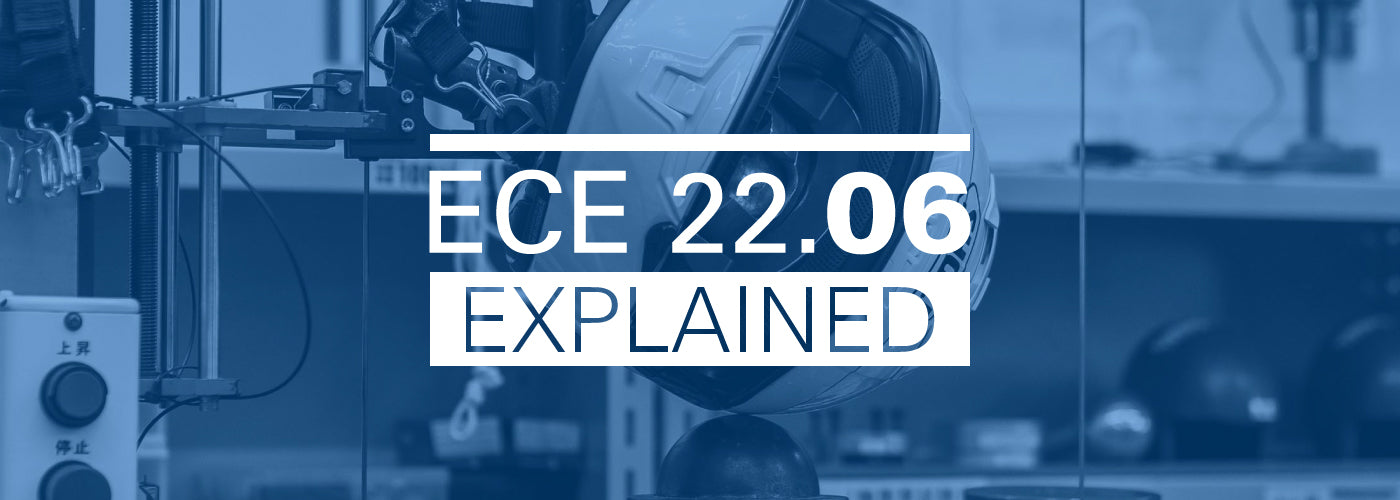As the motorcycle industry continues to evolve, ensuring rider safety is of utmost importance. One significant aspect of rider safety is the helmet they wear. The European standard for motorcycle helmets, ECE 22.06, has recently undergone changes that reflect advancements in technology and increased protection. In this blog post, we dive into these changes and their impact on the motorcycle community.
The Purpose of ECE 22.06:
ECE 22.06 is a set of safety standards established by the United Nations Economic Commission for Europe (UNECE). Its primary goal is to standardise motorcycle helmet requirements to ensure a minimum level of safety for motorcyclists across the European Union and other participating countries.
Key Changes in ECE 22.06:
The updated version, ECE 22.06, introduces several changes that enhance rider safety. Here are some notable updates:
1. Impact Velocity and Potential Damage:
ECE 22.06 introduces new impact tests at higher velocities to evaluate helmet stability and its ability to mitigate potential damage during crashes. The modified tests simulate different types of accidents, allowing manufacturers to design helmets that offer improved protection
2. Shell Penetration Resistance:
The revised standards demand increased shell penetration resistance. Helmets must now demonstrate better defense against sharp objects striking the helmet's surface, reducing the risk of head injuries from flying debris or impacts.
3. Visor Requirements:
ECE 22.06 now specifies stricter criteria for visors. Helmets must undergo extensive testing to evaluate their resistance against high-speed projectiles, abrasion, and optical distortion, resulting in enhanced visibility and reduced eye strain.
4. Chin Guard and Impact Energy Distribution:
The new standards also address chin guards, ensuring they provide sufficient protection to the rider's face without obstructing visibility or causing injuries in case of accidents. Additionally, distribution of impact energy across the helmet is better regulated, reducing concentrated impact points.
5. Certification and Labeling:
To comply with ECE 22.06, helmets must undergo rigorous testing in certified laboratories. Only helmets that meet the specified safety requirements receive official certification labels, which indicate their compliance with the standards. Riders should always look for these labels when purchasing a new helmet.
6. Impact on the Motorcycle Community:
The changes in ECE 22.06 should be celebrated as significant progress in ensuring rider safety. Manufacturers are now motivated to create helmets that offer enhanced protection and durability, inspiring trust in riders across Europe. Additionally, these revised standards encourage innovation and competition, leading to improved helmet design and technology.
With the implementation of ECE 22.06, motorcycle enthusiasts can expect helmets that offer advanced safety features and improved protective qualities. As riders, it is imperative to prioritise our safety by investing in helmets that meet the updated standards. Remember to look for the certification label when purchasing a helmet, ensuring you are getting the best protection available. Stay safe, ride responsibly, and enjoy the open road!
*Disclaimer: The blog post is for informational purposes only and does not replace professional advice. Always consult with experts or relevant authorities for detailed information and guidance.
